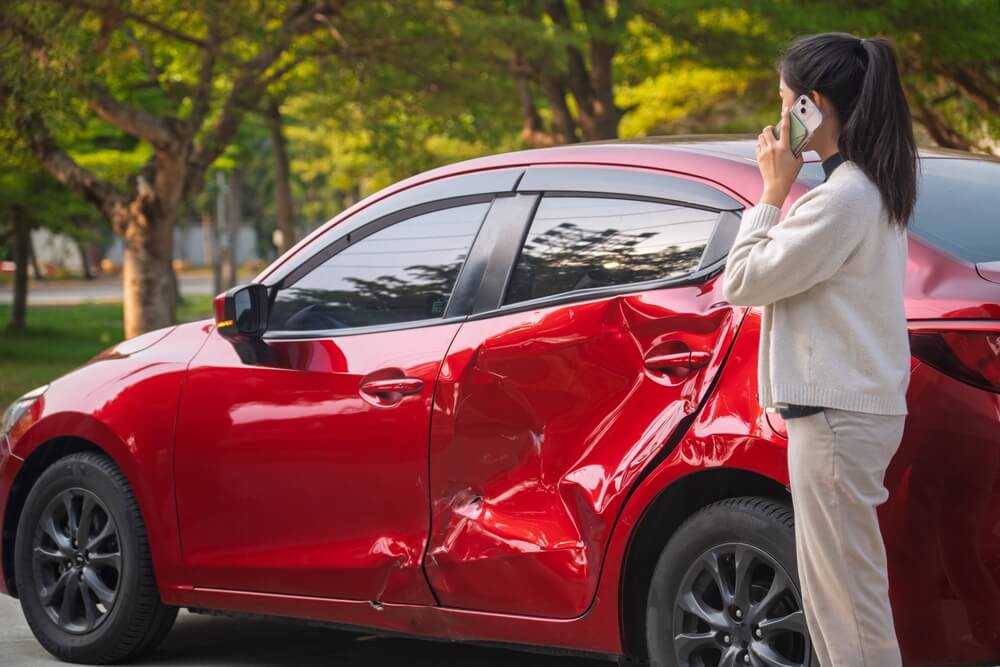
If you are not redirected within 30 seconds, please click here to continue.
Samedi: 10h – 16h HAE

If you are not redirected within 30 seconds, please click here to continue.
If you are not redirected within 30 seconds, please click here to continue.
Vehicle Safety Technologies: Helpful or Hindering?

Countless studies trumpet the benefits of modern vehicle safety technologies built to help prevent motorists from getting into car crashes (and keep their auto premiums low). So why aren’t these innovative technologies helping to lower car insurance rates?
From lane departure warning and prevention systems, blind-spot detection, and electronic stability control to automatic emergency braking, rearview cameras, and cross-traffic alerts, the ever-expanding menu of high-tech vehicle safety systems in vehicles endeavour to make driving safer.
They may be doing what they’re designed to do, but as it turns out, driver-assist technologies are also increasing the cost to repair vehicles if the driver gets into a collision. That’s because bumpers are no longer simply bumpers, and a sideview mirror is now a veritable smart-view mirror warning drivers of traffic approaching from behind in other lanes. Thus, the cost to repair or replace them is increasing. Sensors and cameras to support car safety technologies are typically located in these areas and, as a result, are prone to damage. Even a minor fender bender can result in tens of thousands of dollars in repairs due to the expensive technology incorporated in new vehicles.
In 2018, the Insurance Bureau of Canada notes auto insurance claims hit a mind-blowing $18.2 billion in Canada – 83.8% of that sum due to collisions and other incidents involving private passenger vehicles. By comparison, insurers paid more than $12 billion to settle auto accident claims in 2017.
Private auto insurance is highly regulated by provincial governments. In Ontario, for example, it is the Financial Services Regulatory Authority (FSRA) that determines auto rates and how insurers manage claims. FSRA monitors evolving trends that may affect auto insurance rates, including the increasing cost of claims and the scourge of distracted driving. The equation is straightforward: the more car accidents arising from inattentive drivers driving progressively more expensive vehicles results in auto premium increases. That’s because insurers use a ‘risk pool’ of many premiums to pay for auto losses.
A Safety Conundrum
If driver-assist technologies are helping make driving safer, why do so many motorists find them to be either distracting, ineffective, or annoying?
Perhaps it is because many of the safety systems are still in their infancy in terms of their development, and generally, how they work are not consistent across various makes and models. Nevertheless, and according to a 2019 Desjardins Insurance national survey, 63% of Canadians, whether they drive or not, believe vehicle safety features can contribute to the problem of distracted driving. Additionally:
- 48% think vehicle safety technologies pose a risk to road safety
- 46% think Canadian drivers are over-reliant on vehicle safety technologies
- 80% think there should be more education on how to use safety features in vehicles
The same survey notes 52% of drivers believe vehicle safety features help reduce the number of collisions, and 51% of drivers feel vehicle safety features are needed to keep our roads safer.
Other research by Carnegie Mellon University in Pittsburgh and a joint study by the Insurance Institute for Highway Safety and the Highway Loss Data Institute in the U.S. find driver-assist technologies provide overwhelming benefits.
The Safer Vehicles Are, the More Reckless We Drive?
Drivers may think these safety or driver-assist technologies protect them completely, but they do not. That falsehood may be making the average driver a greater risk behind the wheel. Understanding the driver-assist features in your vehicle is essential to benefit from their use.
Also, if drivers don't trust the systems or find them annoying, they may disable them. Similarly, if motorists don't understand or are overwhelmed by the warnings, then the systems are ineffective.
To that end, helping Canadians learn more about driver-assist technologies and their limitations is the purpose of the Ottawa-based Traffic Injury Research Foundation’s website BrainOnBoard.ca. The National Safety Council in the U.S. also provides a useful site to learn more about these technologies.
Protect Yourself with the Right Auto Insurance Policy
Regardless of which high-tech vehicle safety systems your car has, an auto insurance policy that caters to your needs and budget is a must-have. Learn what your options are, and lower your premium by making an informed decision.
Get money-saving tips in your inbox.
Stay on top of personal finance tips from our money experts!









